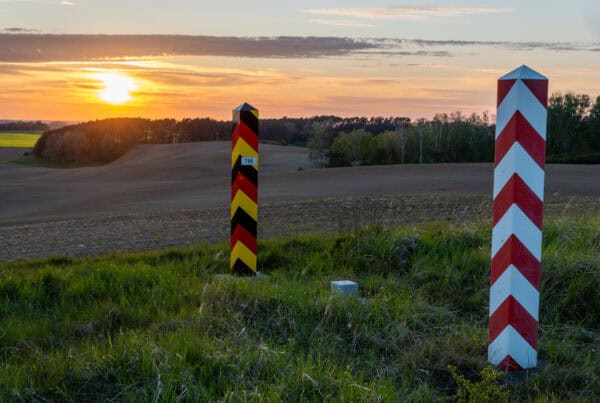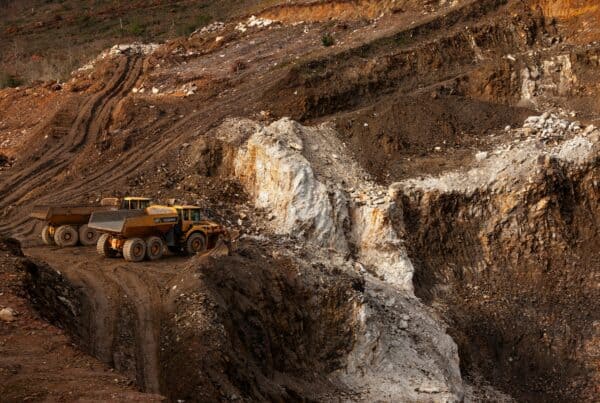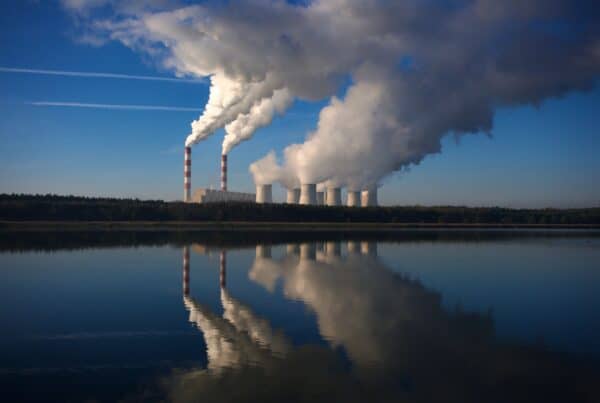Article written by Andrea Bogoni and Jan Normann. Interviews conducted by Jan Normann.
Introduction
Since the war in Ukraine began on February 24, 2022, Poland has emerged as a major refuge for Ukrainians fleeing the conflict. In a matter of months, hundreds of thousands of refugees entered Poland, significantly impacting the country’s society and economy. This article explores the demographic characteristics, economic conditions, and future plans of Ukrainian refugees in Poland based on available data.
The conditions of Ukrainian refugees in Poland
A study by the National Bank of Poland (NBP), which surveyed 3,165 adult Ukrainian refugees, provides a detailed look at the demographics of this group. The invasion by Russia and the subsequent opening of Poland’s borders, alongside the Ukrainian president’s decree preventing men aged 18-60 from leaving, resulted in a predominance of women among the refugees. Women account for nearly 90% of those surveyed [1].
The largest demographic among the refugees are individuals aged 30-44, an age bracket typically associated with high workforce participation and family formation. Many refugees arrived with children, and a notable proportion of the refugee population includes older adults (60+), highlighting the unique demographic aspects of this crisis, as older individuals usually migrate less frequently [2].
Most refugees entered Poland via the Polish-Ukrainian border, although 13% arrived through other countries due to the proximity of other borders and long queues at the Polish-Ukrainian border. Over time, the percentage of refugees coming from other directions increased, possibly indicating that Poland offered relatively better conditions compared to other nations [3].
Economically, Ukrainian refugees face significant challenges. Many struggle to secure permanent employment and must rely on social support and aid organizations. Although some refugees do find work, it is often in low-paying jobs that do not match their qualifications. This mismatch is due to language barriers, differing recognition of professional qualifications, and limited knowledge of the local job market [4].
Poland provides extensive aid to Ukrainian refugees, including housing, financial assistance, access to education for children, and medical care. NGOs, local communities, and international humanitarian agencies play crucial roles in delivering this support. Despite the broad range of assistance available, coordinating these efforts and tailoring them to meet individual refugees’ needs remains a major challenge [5].
The future plans of Ukrainian refugees in Poland vary based on several factors such as age, gender, and family circumstances. Men are more likely than women to express a desire to stay in Poland permanently, though they also consider moving to other countries in the short term. Younger refugees (under 29) are more inclined to remain in Poland, while older refugees (over 60) often plan to return to Ukraine within the next year [6].
The uncertainty about the future and the duration of the conflict heavily influences refugees’ decisions. Many refugees make short trips back to Ukraine to assess the situation or because of homesickness, only to return to Poland. There is also a segment of refugees who, after initially staying in Poland, decides to move to other European Union countries seeking better living and working condition [7].
The attitude of the Polish society towards Ukrainian refugees
It is important to assess the current attitude of Polish society towards refugees from Ukraine: this has remained largely positive, although there have been some changes. To illustrate, a 2024 survey by Opinia24 and YouGov for the International Rescue Committee (IRC) revealed that 79 percent of Poles think providing Ukraine with food, water, medical aid, and shelter is essential. Additionally, 72 percent of those surveyed support offering services like medical care and education to Ukrainian refugees in Poland. However, only 42 percent are in favour of granting long-term residency to Ukrainians in Poland, while 44 percent oppose such support [8]. Consequently, any observable decline in support for assisting Ukrainian refugees can be attributed to the often-natural factors of public fatigue with the topic of war.
Professor Robert Staniszewski [9], expert on the Ukrainian crisis and author of a 2023 research on the perception of refugees in Poland [10], told Blue Europe that “the social perception of Ukrainian refugees and migrants in the Polish society differs both in the descriptive dimension – characterising the characteristics constituting these groups – and in the affective and behavioural dimensions. This was found on the basis of a number of variables verified during the research, including the holistic Social Perception of Migrants Index (SPMI). This perception has not changed since the start of the research project.” It is important to note that Professor Staniszewski’s research indicates that during the first year of the war, Poles demonstrated a consistently high level of acceptance and support for Ukrainian refugees. His comparative analysis of public opinion surveys conducted in 2022 and 2023 reveals the initial solidarity and empathy towards those fleeing the conflict.
In fact, at the outset of the conflict a significant influx of Ukrainian refugees sought refuge in Poland and the crucial factor during the initial stages was the role played by ordinary people, the Poles, who organised collections, donated items and took refugees in their homes. In the initial months of the war, Polish society demonstrated remarkable compassion, which left a profound impression on observers in the West.
However, as time passed, the situation began to change, emotions subsided, and the war front froze. This has prompted debate within Polish society regarding the legitimacy of the aid, with right-leaning groups in Poland being the primary proponents of this viewpoint [11]. In this regard, Professor Robert Staniszewski told Blue Europe that “the strongest influence on the perception of refugees from Ukraine by the Polish society is the electoral preferences, as well as the sources of information about Poland and the world, which are television, in particular Public Television and TVN, as well as the Internet. Among Konfederacja’s voters, there are most people who have a very negative or negative perception of refugees from Ukraine.”
Asked about the change in the Polish perception of Ukrainian refugees, Professor Staniszewski told Blue Europe that:
In January 2024, the SPMI values for migrants have changed. They are still perceived positively by the majority of Poles (55%), but compared to June 2023, the aggregate index value for the positive dimension has decreased by 4 percentage points. This phenomenon is accompanied by an increase in the percentage of those characterised by a negative perception by 8 percentage points. In January 2023, migrants are perceived negatively by 22% of respondents, and almost as many (24%) are characterised by a neutral perception.
There was no significant change in public perception of refugees from Ukraine during the analysed period compared to the last measurement in June 2023. Based on the analysis of the SPMI values, it can be concluded that the majority of Poles still have a positive perception of refugees from this country (67%). Negatively, Ukrainians staying in Poland are perceived by 13% of respondents and 21% have a neutral perception.
As in June 2023, when asked ‘Have your attitudes towards refugees from Ukraine changed recently?’, a third of respondents (32%) say yes. The vast majority, who perceive a change believe that their attitudes towards refugees from that country have worsened (88%).
In the January survey, similarly to June 2023, the main factor influencing the change in Poles’ attitudes towards refugees from Ukraine is their “demanding attitude”. According to those surveyed, the “demanding attitude” in relation to refugees from Ukraine means that “everything is due to them” or “everything is due for free”. This identification is identical to the previous measurement.
This indicates a considerable change in the perception of migrants and refugees among Poles in the second year of the war. While initial solidarity and support were strong, emerging concerns and perceptions of entitlements have begun to erode previously widespread positive attitudes, suggesting the growing complexity of social and economic integration of refugees and migrants in Poland. The majority continues to have a positive perception of migrants, but there has been a noticeable decline in positive views coupled with an increase in negative ones, with positive perceptions dropping by 4 percentage points and negative perceptions increasing by 8 percentage points since June 2023. A major factor in this negative change is the perceived “demanding attitude” of refugees, characterized by the belief that refugees expect entitlements or free benefits.
Conclusion
The situation of Ukrainian refugees in Poland remains a dynamic and multifaceted issue, shaped by ongoing conflict and the resulting humanitarian crisis, presenting unique challenges for both Poland and Ukraine, with ordinary people facing the highest fatigue from the humanitarian crisis.
In March 2023, Blue Europe published “The Demographic Cost of the War in Ukraine” authored by Henrique Horta, examining the significant population displacements caused by the war in Ukraine, with many Ukrainians fleeing to neighbouring countries. The situation has not changed since then and the migration that has led to a notable demographic shift, especially the loss of younger individuals, poses long-term economic and social challenges for Ukraine and, consequently, host countries. This dramatic demographic change also negatively affects the possibilities of returning to a “peace economic system,” given the lack of young labour force.
Further complicating such challenges, the initial wave of solidarity and support from the Polish society has shown signs of fatigue. While a majority of Poles still maintain a positive perception of Ukrainian refugees, there is a noticeable decline in support, influenced by concerns over the perceived demands of refugees and the strain on local resources. To alleviate the perceived “Western war fatigue” and the displacement of Ukrainian war refugees, European governments should work with Ukraine to develop a multilateral migration policy that creates favourable conditions for Ukrainians to return home in regions not directly involved in military operations and combat. This would also alleviate the demographic crisis suffered by Ukraine.
In conclusion, the journey “from conflict to community” of Ukrainian refugees in Poland highlights the complexities of forced migration and the long-term implications for both the refugees and host communities. The resilience and adaptability of both the refugees and the Polish society will be crucial to avoid social instability.
References
-
Narodowy Bank Polski. Sytuacja życiowa i ekonomiczna uchodźców z Ukrainy w Polsce: Raport z badania ankietowego. Warszawa: Narodowy Bank Polski, 2022, 25. ↑
-
Ibidem, p. 8. ↑
-
Ibidem, p. 10. ↑
-
Ibidem, p. 16-17. ↑
-
Ibidem, p. 20-22. ↑
-
Ibidem, p. 23-26. ↑
-
Ibidem, p. 27-30. ↑
-
Business Insider Poland. Zapytali Polaków o nastawienie do Ukraińców. Oto wnioski [SONDAŻ]. Available at: https://businessinsider.com.pl/wiadomosci/zapytali-polakow-o-nastawienie-do-ukraincow-oto-wnioski-sondaz/gg4w894. ↑
-
Robert Staniszewski (ResearchGate), an expert on Ukraine and refugees, is Assistant Professor at the Faculty of Political Science and International Studies at the University of Warsaw. Member of the Scientific Council of the Disciplines of Political Science and Administration and Security Science. He specializes in economic policy in Poland during the period of political transformation, sociology of politics, marketing, marketing and social research, public opinion, migration and social perception of systemic transformation in Poland. He is also the author of the 2023 Report on “Public Perception of Refugees from Ukraine, Migrants and Actions Taken by the Polish State.” ↑
-
Robert Staniszewski. Społeczna percepcja uchodźców z Ukrainy, migrantów oraz działań podejmowanych przez polskie państwo. Raport porównawczy z badań opinii publicznej, które zostały przeprowadzone na próbach ogólnopolskich osób w wieku 16-65 lat oraz próbie regionalnej (obszar przygraniczny z Białorusią) w latach 2022 – 2023. Warszawa, 2023. ↑
-
Nathan Alan-Lee (April 2023). Poland’s Far-Right Advances on Anti-Ukraine Sentiment. CEPA. Available at: https://cepa.org/article/polands-far-right-advances-on-anti-ukraine-sentiment/. ↑





